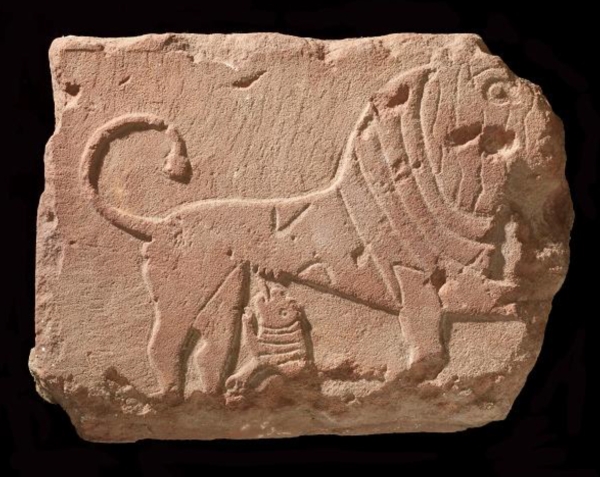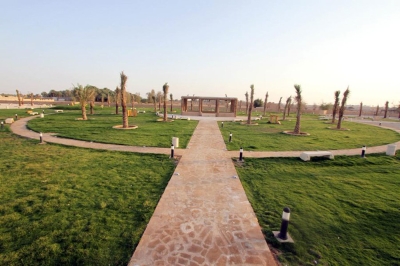
The Sandstone Sculpture is a rectangular block of stone, found in Wadi al-Hamd, at the site of Khirbat Dadan, in AlUla Governorate, in al-Madinah al-Munawwarah Province. It is one of the most important cultural and civilizational heritage sites in the Kingdom of Saudi Arabia. The sculpture features a protruding carving of a lioness standing on its four legs, with an atrophied belly, stringy hips, and a tail raised upwards and curved forward in the form of an incomplete circle, with its tip hanging down in the form of a ball. The body of the sculpture features two opposing triangles, one with the vertex pointing downward and the other upward. There is a third triangle located where the hand meets the body. Its rounded lines are carved on the lioness's neck and cascade horizontally.
Part of the lioness's face and head are missing. The eye featured in the remaining part is fully rounded, with a protruding pupil in the center. Both halves of the legs and a large part of the hands are also missing. A cub is shown standing under the lioness's belly, suckling her. The cub features horizontally cascading lines around his neck.
Measurements of the sculpture
Length: Forty-six cm.
Width: Thirty-three cm.
Thickness: Fifteen cm.
History of the sculpture
The sandstone sculpture dates back to the half of the first millennium BCE, specifically during the era of the Lihyanite Kingdom.
It is kept at the museum of the Archaeological Department of King Saud University. It is registered under number 15 D 2. The discovery of the sandstone lioness sculpture is one of the outcomes of the archaeological survey and excavation work conducted by the antiquities and museums sector in Saudi Arabia over recent years, as part of the efforts of Saudi archaeologists and scientific missions. It is on display at the Saudi Archeological Masterpieces Through the Ages Exhibition.
Significance of the sculpture
The person who sculpted this sculpture succeeded at documenting the scene of the lioness breastfeeding her cub in a way that represents a great deal of realism and clear expression. The discovery of the lioness in Wadi al-Hamd, at the site of Khirbat Dadan, bears significant environmental connotations, mainly that the northwest of Saudi Arabia received ample rain in the past and had rich vegetation, ultimately enabling lions to live there.
Related quizzes
Related articles

